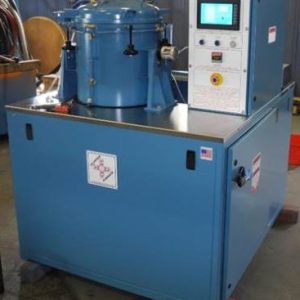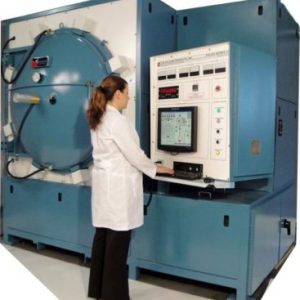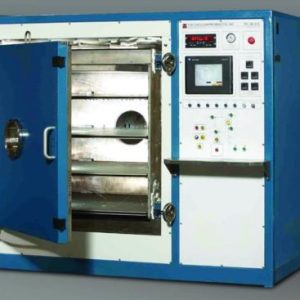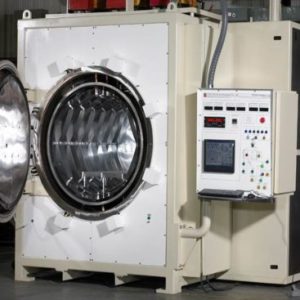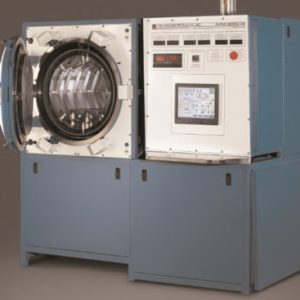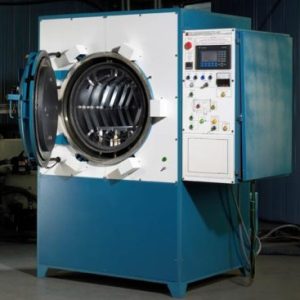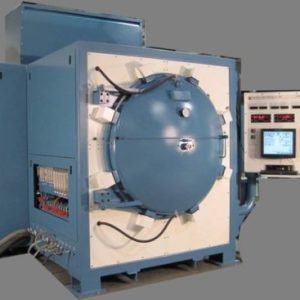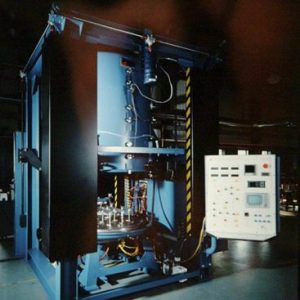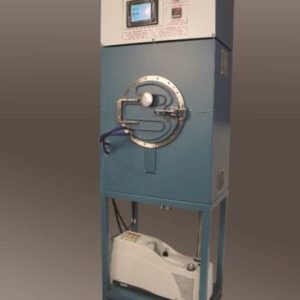Vacuum Ovens

What is a vacuum oven?
A vacuum oven is a multipurpose piece of equipment that is used to dry up heat-sensitive materials such as pharmaceuticals powders without altering the chemical composition of the material.
The Vacuum oven extracts moisture from the material by lowering the boiling point such that the losses of compounds apart from moisture are minimized.
Usually, the item is instantly dried under considerate pressure and conduction heat, thus leaving only the required moisture residue.
Vacuum oven equipment we carry
How does vacuum drying work?
As discussed earlier, vacuum ovens have a wide range of industrial applications, such as drying hygroscopic substances very fast, gently, and in an energy-efficient way.
The liquid in the dried material is evaporated through pressure reduction and ultimately extracted as vapour.
A vacuum oven operates by creating a vacuum, lowering the chamber pressure past the liquid’s vapour pressure, hence boiling it.
A typical vacuum oven operates at a temperature range of 200C to 250C.Some of the features you consider in a vacuum oven include high-quality pressure casing, pump, and gasket seals.
Besides, look for a vacuum oven with convenient and programmable controls and computer interfaces.
The vacuum pumps help decrease the pressure around the hygroscopic substance being dried. The reduction of pressure also decreases the boiling point of the liquid inside the product.
This, in turn, increases the evaporation rate hence a significant increase in the drying rate of the material.
Typically, the pressure maintained in a standard vacuum oven is about 0.03–0.06 atm, while the water boiling point ranges from 25-30 °C.
As a batch operation, the drying up process involves lowering the relative humidity and ambient pressure, resulting in faster drying.
This is why this technique is ideal for drying heat-sensitive products that would otherwise get degraded or destroyed if dried through direct heating.
These products include the following but are not limited to pharmaceuticals, chemicals, and foodstuffs.
Some vacuum drying ovens also include specialized features such as residual gas analysis ( to prevent excessive material drying) and solvent recovery in case of over-drying.
If you’re targeting dry flammable solvents, consider looking for a safe vacuum drying oven that is certified for such applications.
What is a vacuum oven used for?
Vacuum ovens have a wide range of applications in research, laboratory, industry, and engineering. It uses a low-pressure environment to keep the boiling point low and minimize oxidation of the material during drying.
If the material being dried is a solution, then a vacuum oven is ideal since the vapour can be recovered through condensation in case of overheating.
To maintain the high quality of the product being dried, such fruit preservation, hybrid drying combination, osmotic dehydration followed by microwave-vacuum drying are done.
This process doesn’t not only results in high-quality drying but also proves to be very effective in heat-sensitive materials.
Vacuum oven uses
Some of the typical applications of vacuum ovens today include removing flammable solvents, drying tiny parts, determining moisture content in heat-sensitive material, purification, dry sterilization, and outgassing solid material, among other uses.
Some vacuum ovens are made from cast iron, although many of them are made using stainless steel.
This helps them bear high vacuum pressure without undergoing any form of deformation.
The oven is purposely divided into equal hollow trays to increase the surface area for maximum heat conduction.
The oven door is then locked using an airtight lid connected to a vacuum pump for pressure reduction.
The material being dried up is placed on the trays in the vacuum drying chamber, and pressure is reduced or regulated through a vacuum pump.
The oven door is then tightly closed, and steam is conveyed through the space in between the jacket and trays.
This ensures that heat is only transferred through conduction. The water vapour arising from the drying chamber is then directed to the condenser.
The pump is disconnected after the drying is over before collecting the dried product.
Get quote for vacuum ovens
Need vacuum oven equipment for your operations? Drop us an enquiry with your requirements and we’ll get back to you with recommended options and cost estimates. Contact us now.

